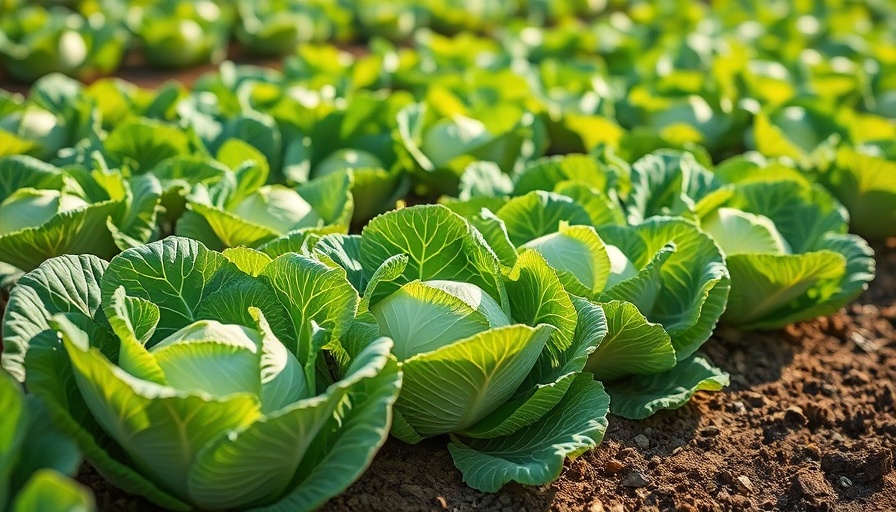
Mastering Succession Planting for a Bountiful Harvest
For residents of North County San Diego longing for a lush and productive garden, mastering the technique of succession planting can transform your gardening experience. This method isn’t just about maximizing yields; it’s a smart way to cultivate an ongoing relationship with your garden—ensuring fresh produce throughout the year. As gardening enthusiasts understand, planting in succession is about introducing crops at strategic intervals or mixing various types of plants, enhancing both output and biodiversity.
Understanding Your Frost-Free Window
Before diving into planting schedules, it’s crucial to determine your frost-free days. North County, sitting in Zones 9 and 10, enjoys milder winters, allowing gardeners to plant often. Knowing exactly when to plant ensures the crops mature before any unexpected cold snaps, which can save a season’s worth of hard work.
Choosing the Right Crops: Smart Choices for Succession Planting
Your choices in crops can have a significant impact on your gardening success. Consider the following options for optimal growth:
- Cool-season crops: These include quick-maturing varieties like radishes, lettuce, and carrots, which thrive in the cooler months.
- Warm-season crops: Items like beans and summer squash are ideal for the scorching summer months.
- Root vegetables: Such as beets and carrots, which can be planted in succession throughout the year.
Regular sowing intervals, for example, planting radishes every 7 days or bush beans every two weeks, can help ensure a continuous harvest.
Plan and Monitor Your Planting Schedule
Planning is key when it comes to maintaining the flow of fresh crops. Create a tailored planting schedule to avoid gaps in your garden. Using tools such as a sowing calendar can help you stay organized. For instance, plant leaf lettuce every 7 to 10 days in cooler months, and don't forget to manage your crop’s days to maturity to align with the first frost.
Nourishing Your Soil for Optimal Growth
Healthy crops start with healthy soil. As you plant in succession, remember that every new planting draws nutrients from the soil. Nourishing your soil becomes essential between planting cycles. Refreshing your beds with compost, organic fertilizers like Darn Good Fertilizer, and worm castings can rejuvenate the nutrients required by your crops, keeping your garden thriving.
Adapting to Local Microclimates
North County gardeners have the advantage of knowing their local microclimates well. Using tools like shade cloth during heat waves or row covers during chilly nights can dramatically extend your planting seasons. Many crops can be cultivated year-round, allowing you to adapt your gardening strategies based on environmental factors.
Maximizing Your Yield Through Diverse Strategies
There are several practical strategies to keep your garden abundant. Consider using:
- Relay planting: Consistently sowing the same variety at regular intervals.
- Crop rotation: Alternating crops between plantings to avoid soil degradation.
Such techniques not only optimize productivity but also contribute to soil health and mitigate pest issues.
Supporting Mental Health Through Gardening
Beyond mere sustenance, gardening nurtures mental and emotional well-being. The rhythmic act of planting and nurturing can lift spirits, reduce stress, and create a profound connection to nature. As residents of North County, embracing this technique can empower your physical space while simultaneously providing therapeutic benefits.
Simple Steps to Start Your Succession Planting Journey
Ready to implement these strategies? Begin by:
- Researching your local frost dates.
- Choosing crops that suit your seasonal preferences.
- Creating a planting calendar that suits your needs.
- Nourishing your soil consistently.
- Monitoring microclimate effects.
These steps will help nurture a productive and fulfilling gardening experience.
Conclusion: Embrace the Bounty of Nature
Planting in succession not only allows for better utilization of your gardening space but also supports a more vibrant, newly flourishing ecosystem in your own backyard. Whether you’re an experienced gardener or just beginning, this practice can significantly enhance your gardening journey. Take the time to implement these strategies, and you’ll reap the rewards of a bountiful and flourishing garden.
 Add Row
Add Row  Add
Add 




Write A Comment